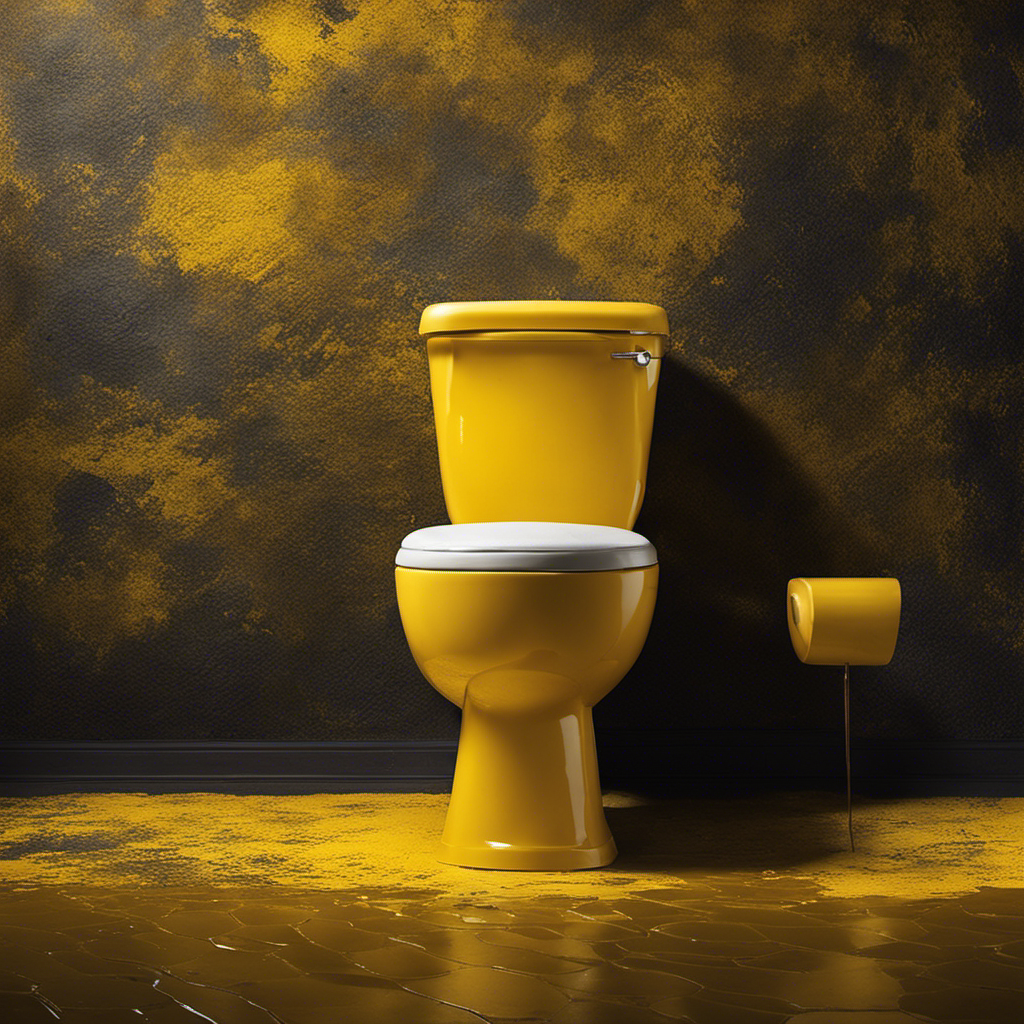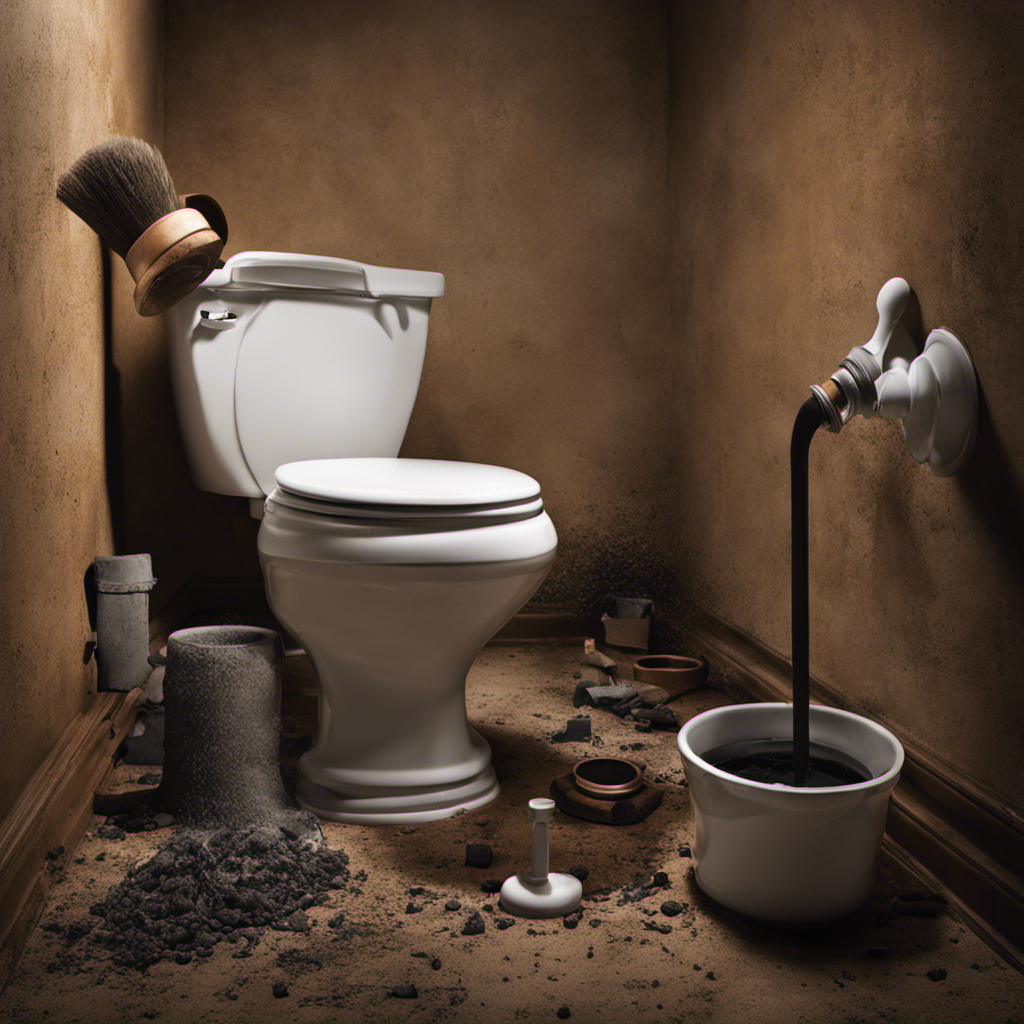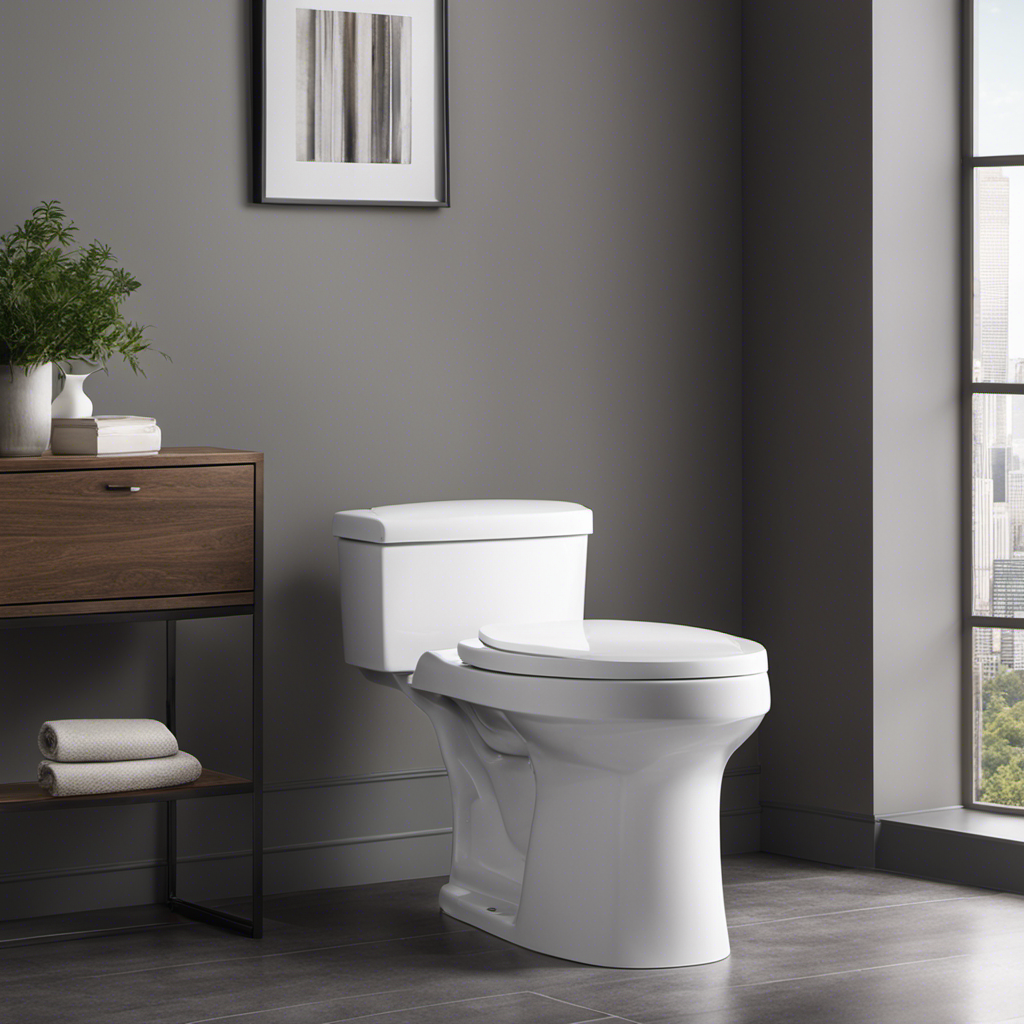I know what you’re thinking: yellow stains in your toilet bowl are gross and frustrating. But fear not, I’ve got the answers you need.
In this article, I’ll delve into the technical details of what causes those unsightly stains. From mineral deposits to urine buildup, I’ll cover it all.
Get ready to tackle those yellow stains head-on and reclaim the cleanliness of your bathroom.
Key Takeaways
- Yellow stains in toilet bowl are caused by mineral deposits known as limescale or hard water stains, which are caused by the presence of calcium and magnesium in the water supply.
- Acid-based cleaners can dissolve mineral deposits and prevent yellow stains, and water softener installation and regular cleaning can also help prevent mineral deposits.
- Regular cleaning is essential to prevent urine buildup, as urine contains chemicals that cause stains and odors. Cleaning solutions with bleach or hydrogen peroxide can effectively remove urine stains.
- Regular cleaning and maintenance can prevent bacterial growth in the toilet bowl. Applying toilet bowl cleaner, letting it sit, and then flushing can help maintain a bacteria-free and clean toilet bowl.
Mineral Deposits
You’ll notice yellow stains in your toilet bowl due to mineral deposits. These deposits, also known as limescale or hard water stains, are caused by the presence of minerals like calcium and magnesium in the water supply.
When water evaporates in the toilet bowl, these minerals are left behind, forming yellowish or brownish stains. To remove these stubborn stains, you can use specialized toilet cleaning products that contain acid-based cleaners. These cleaners work by breaking down and dissolving the mineral deposits, making it easier to scrub them away.
However, prevention is always better than cure. To prevent mineral deposits from forming in the first place, you can install a water softener or use a toilet cleaner that has anti-limescale properties. Regular cleaning and maintenance of your toilet bowl will also help in preventing the buildup of mineral deposits.
Hard Water Stains
It’s common for hard water to leave unsightly discoloration in the toilet. Cleaning the toilet regularly is essential to maintain its appearance and prevent the buildup of hard water stains. Understanding the impact of water quality on toilet cleanliness is crucial. Here are four key factors to consider:
-
Mineral content: Hard water contains high levels of minerals like calcium and magnesium. These minerals can leave behind stubborn yellow stains in the toilet bowl.
-
pH level: Hard water often has a higher pH level, making it more alkaline. This alkalinity can contribute to the formation of yellow stains.
-
Water hardness: The hardness of water depends on the concentration of minerals present. The higher the water hardness, the more likely it is to cause yellow stains.
-
Water temperature: Hot water can accelerate the deposition of minerals and increase the likelihood of yellow stains in the toilet bowl.
To effectively combat hard water stains in the toilet, consider using cleaning products specifically designed for removing mineral deposits. Regular maintenance and cleaning will help keep your toilet looking pristine.
Urine Buildup
To prevent the buildup of urine in your toilet, regularly cleaning and maintaining it is essential. Urine contains chemicals that can leave behind stains and strong odors if not properly cleaned. Proper toilet hygiene is crucial to ensure a clean and sanitary bathroom environment. There are various cleaning solutions available in the market that are specifically designed to tackle urine stains and odors. These solutions typically contain ingredients like bleach or hydrogen peroxide, which help break down the urine and remove the stains. It is important to follow the instructions on the cleaning product and use appropriate safety measures such as wearing gloves and ensuring proper ventilation. Regular cleaning and maintenance will not only keep your toilet looking clean but also prevent the buildup of urine and maintain optimal toilet hygiene.
| Cleaning Solution | Key Features |
|---|---|
| Bleach-based | Effective against stains |
| Hydrogen peroxide | Neutralizes odors |
| Enzyme-based | Breaks down urine |
| Citric acid-based | Removes mineral deposits |
Bacterial Growth
Regular cleaning and maintenance can help prevent bacterial growth in your toilet. Bacterial growth in the toilet bowl can lead to unsightly discoloration, making your bathroom look dirty and unhygienic. To effectively combat bacterial growth and prevent toilet bowl discoloration, it is important to use proper cleaning techniques.
Here are four steps to keep your toilet bowl bacteria-free and sparkling clean:
-
Start by applying a toilet bowl cleaner directly under the rim, allowing it to flow down the sides of the bowl.
-
Use a toilet brush to scrub the entire surface of the bowl, paying special attention to the waterline and any stained areas.
-
Let the cleaner sit for a few minutes to allow it to work its magic.
-
Finally, flush the toilet to rinse away the cleaner and any loosened bacteria and stains.
By following these cleaning techniques, you can maintain a pristine toilet bowl and prevent bacterial growth.
Now, let’s explore the next subtopic: rust and corrosion.
Rust and Corrosion
Using a high-quality toilet cleaner can help prevent rust and corrosion in your bathroom. Rust and corrosion occur when metal surfaces come into contact with water or moisture for extended periods. These unwanted chemical reactions can cause unsightly stains and weaken the structural integrity of your toilet.
To prevent rust, it is important to regularly clean your toilet bowl and tank. Start by using a toilet brush to scrub away any dirt or grime. Then, apply a rust-preventing cleaner to the affected areas and let it sit for a few minutes. Finally, rinse thoroughly with water.
Additionally, make sure to keep your bathroom well-ventilated to minimize moisture buildup. By following these cleaning techniques and using a high-quality toilet cleaner, you can effectively prevent rust and corrosion in your bathroom.
Conclusion
In conclusion, the yellow stains in your toilet bowl can be attributed to various factors. These include mineral deposits, hard water stains, urine buildup, bacterial growth, and rust and corrosion. Understanding the root causes of these unsightly stains is crucial in effectively eliminating them.
Regular cleaning and maintenance, along with the use of appropriate cleaning agents, can help combat these pesky problems. Remember, a pristine porcelain throne is not only visually pleasing but also promotes a hygienic and inviting bathroom environment.










